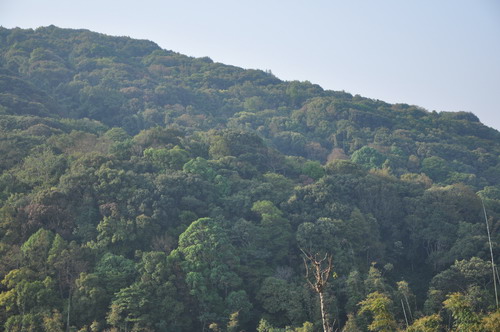Habitat degradation and loss are commonly regarded as the most important threats to biodiversity globally, driving local extinctions and skewing the abundances of persisting species. In the face of this loss and degradation of natural habitat, one of the most common measures for conserving biodiversity is in the use of protected areas. However, many tropical nature reserves are performing poorly and interventions in the broader landscape may be essential for conserving biodiversity both within reserves and at large.
Using birds, Rachakonda Sreekar of Xishuangbanna Tropical Botanical Garden (XTBG) evaluated the contribution a recently established protected area made to biodiversity conservation in Xishuangbanna. The study was conducted in and around Bulong nature reserve (a recently established nature reserve in Xishuangbanna, China), a landscape of approximately 100 km2 with multiple villages and hamlets that borders Myanmar and is an important sub-watershed of the Mekong River.
The researchers conducted a landscape-scale survey of the birds of Mengsong. They constructed a checklist of observed species, previously recorded species, and species inferred to have occurred in the area from their distributions and habitat requirements. They then assessed variation in community composition and habitat specificity at a landscape-scale.
They tried to answer the questions about how bird species richness and composition varied across the landscape, both within the reserve and its immediate environments. They further asked which species occur within the landscape today and which species are known or inferred to have occurred there in the past. Finally, they wanted to find what traits best explain extirpation risk.
Their study found that at least 20% and probably 40% of the bird species that formerly occurred in the Mengsong landscape have been extirpated. Despite having a relatively large area of natural forest habitat, the bird fauna was depauperate and that intense local hunting is the most likely cause of extirpations.
The research results indicated that the recently established Bulong Nature Reserve in Mengsong does not support a bird community of any notable value to conservation, despite the fact that it supports a substantial area of natural forest habitat and is located in one of the planet’s most biodiverse regions.
The study entitled “Yet Another Empty Forest: Considering the Conservation Value of a Recently Established Tropical Nature Reserve” has been published in PLoS ONE.

Bulong Nature Reserve (Image by TAN Yunhong)
Key Words
Nature reserve, assessment, biodiversity loss, bird, tropical, Xishuangbanna

